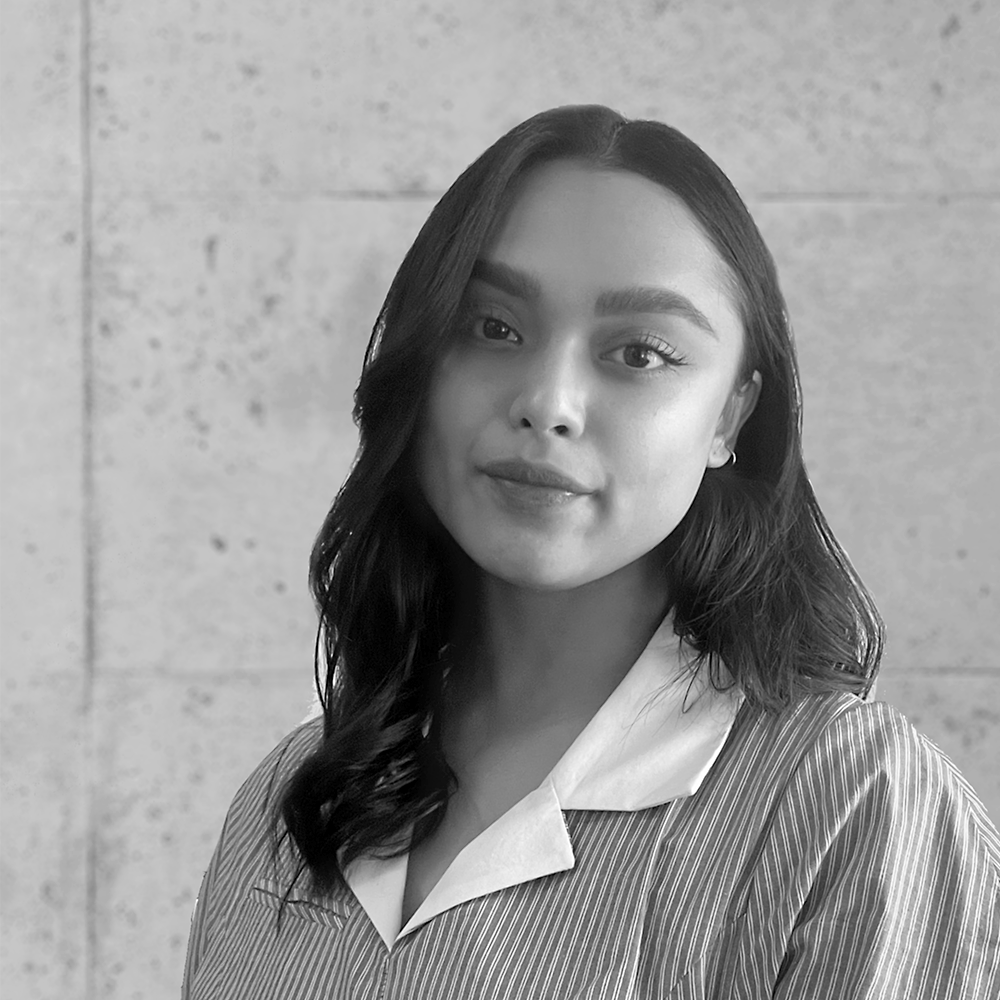Junainah Ahmed

President, Student Forum, 2022‒2023
Degree(s):
MArch I, 2023, Harvard University Graduate School of Design
Bachelor of Science in Architecture, University of Utah
Professional interests:
Exhibition curation and design, postcolonial theory in architecture, and cultural institution design
When did you first become interested in architecture as a possible career?
I would say that I first became interested in architecture when I was young, around elementary-school age. I was very interested in the spaces that I occupied and how they were designed. I was always drawn to the details of the spaces and materials used. However, I didn’t consider architecture as a possible career until a friend recommended it to me during my undergraduate education.
Who or what deserves credit for your success?
Though my parents would say that I’ve been able to come this far on my own, I would disagree and say that without their support, I wouldn’t have been able to come as far as I have.
What is your favorite Boston-area building or structure?
I have two, but they’re very similar. The first is the Isabella Stewart Gardner Museum, and the second is the courtyard at the Boston Public Library. I love how both use natural elements with architecture to curate beautiful and magical spaces within the city.
Which one of your current projects excites you the most?
I’m currently working on my thesis (rethinking the museum typology through blue porcelain), which has been the most exciting project that I have done so far during my educational career. I would say it’s largely because the project allows me to use my strengths in design and my interests to produce a studio brief unique to me.
What do you hope to contribute from your work?
I hope that through all the work that I do, I can contribute to larger conversations on which aspects of architecture continue to perpetuate inequity, coloniality, and disparity in hopes of being able to truly move forward into a world where architecture can step its best foot forward. It’s also nice to see when the work that I do inspires others or contributes to their own academic and personal interests.
What do you see as the largest barrier to equity in your profession?
As I am currently a student, I would say that I have experienced many barriers to equity in the realm of academia. The largest here would be a financial inequity, particularly the difference in students who are able to afford grand means of representation through models, rendering software, and technology. One way I can see of alleviating this is through stipends for all production-based classes, including studios for each student.
What is the most effective step you’ve taken in your work toward a more sustainable built environment?
In my academic projects, I have always tried to maintain the mindset that new construction isn’t always the best means of construction or design, so when there is an existing building available, I have used that and existing resources to approach projects from an adaptive-reuse angle. Other considerations that I have taken include sourcing from local materials so that local economies can be supported by the work, in addition to reducing carbon emissions from transportation.
What is the greatest potential for architecture to shape a neighborhood community?
I believe that architecture has the greatest potential to shape a neighborhood through the policies that the architecture works within, particularly through allocating housing for low-income individuals, providing housing for the unhoused, and creating new community spaces for neighborhoods.
Where do you find inspiration?
I find inspiration through research. A lot of my work comes from extrapolating material, formal, or compositional qualities from nonarchitecture elements. I find this to be an enriching mental exercise in how nonarchitecture can become architecture, but it also adds a level of depth to work that is fun to uncover.
What are you reading right now?
Right now I’m reading Mimesis: The Representation of Reality in Western Literature by Erich Auerbach, How Not to Die by Michael Greger, and Klara and the Sun by Kazuo Ishiguro.
What would you like to see change about Boston’s built environment?
I’d love to see more practices and even academic projects tackling the issue of our aging buildings, particularly all of the triple-deckers across Boston and its adjacent cities that are in desperate need of a considerate climatic update.

